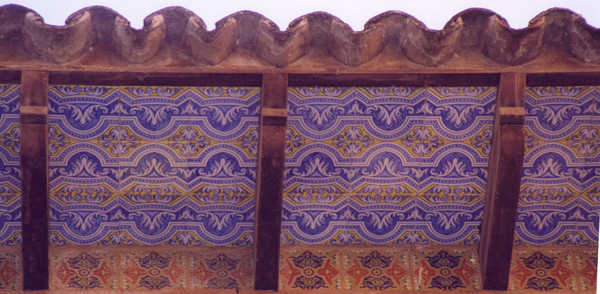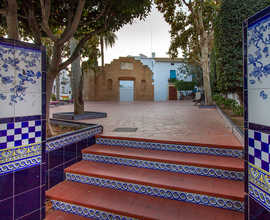Benissa, the Town near Jávea you cannot miss
Jávea or Xàbia is a tourist town in the Marina Alta region, province of Alicante, which stands out for its historic centre and for its splendid coves between cliffs and capes. The historical centre of Jávea, dating from medieval times, stands out for its houses with white facades, Gothic windows, and iron grilles and for the use of the rough stone, characteristic material of the area. Among the monuments to highlight is the Church-fortress of San Bartolomé, from the 14th to the 16th century, a clear example of the Elizabethan Gothic. In that same square the Palau dels Sapena (XV century) or the Casa dels Bolufer (XVIII to XIX century), as well as the Municipal Market and the Town Hall (XVIII century).

What to see near Jávea?
Benissa, the Town near Jávea you cannot miss
From the medieval era is also the historic centre of Benissa, one of the towns near Jávea. We begin our tour of the historic centre through the old east entrance to the walled Benissa: the Plaza del Portal. In this square was the old Municipal Hospital, current Town Hall (XVII century).

If we go along Puríssima Street we find the Placeta de l'Església Vella, in which an old church-fortress like the one we found in Jávea was located and that had a double religious and defensive function (here the inhabitants of the village sheltered from the pirates that devastated the coasts of
the region during the XVI-XVIII centuries). In this street we highlight the grilles of the balconies of the houses and as in Jávea, the use of rough stone. Also in this street we find the Sala del Consell, used as the house of the town and that in the future will house a Benissa museum. In addition, Benissa has rehabilitated its heritage to give it a cultural function, such as the Sede Universitaria of the University of Alicante, les Cases del Batlle (where the Library and the Salvador Soria Art Centre are located) or the House-Palace of the Torres-Orduña (where the Assembly Hall is located). In addition, in Desamparats Street you can visit a real noble house of the 18th century, with its furniture and period tiles, the Abargues House-Museum.

A little further on is the Casal dels Joves, a 16th-century building, which was once the town hall, wheat deposit, jail and even market. Do not forget to visit the Convent of the Franciscan Fathers and its charming surroundings, as well as the imposing Church of the Puríssima Xiqueta .

What to see in Jávea and its surrondings?
Another town that you can visit in Jávea and its surroundings is Benitatxell, which stands out for its spectacular Moraig cove, from which a route to the Llebeig cove starts and through which you can see coastal caves and old fishermen's houses.
Teulada-Moraira is another enclave to visit; this town has two urban centres. The first is Teulada, 6 km from the coast; it has a historic centre known as the "Walled Gothic Teulada" declared of Cultural Interest. The second, Moraira, stands out for beaches such as the Ampolla (dominated by the Castell de Moraira) or the Portet (at the foot of Cap d'Or).
If we go along Puríssima Street we find the Placeta de l'Església Vella, in which an old church-fortress like the one we found in Jávea was located and that had a double religious and defensive function (here the inhabitants of the village sheltered from the pirates that devastated the coasts of the region during the XVI-XVIII centuries). In this street we highlight the grilles of the balconies of the houses and as in Jávea, the use of rough stone. Also in this street we find the Sala del Consell, used as the house of the town and that in the future will house a Benissa museum. In addition, Benissa has rehabilitated its heritage to give it a cultural function, such as the Sede Universitaria of the University of Alicante, les Cases del Batlle (where the Library and the Salvador Soria Art Centre are located) or the House-Palace of the Torres-Orduña (where the Assembly Hall is located). In addition, in Desamparats Street you can visit a real noble house of the 18th century, with its furniture and period tiles, the Abargues House-Museum.
